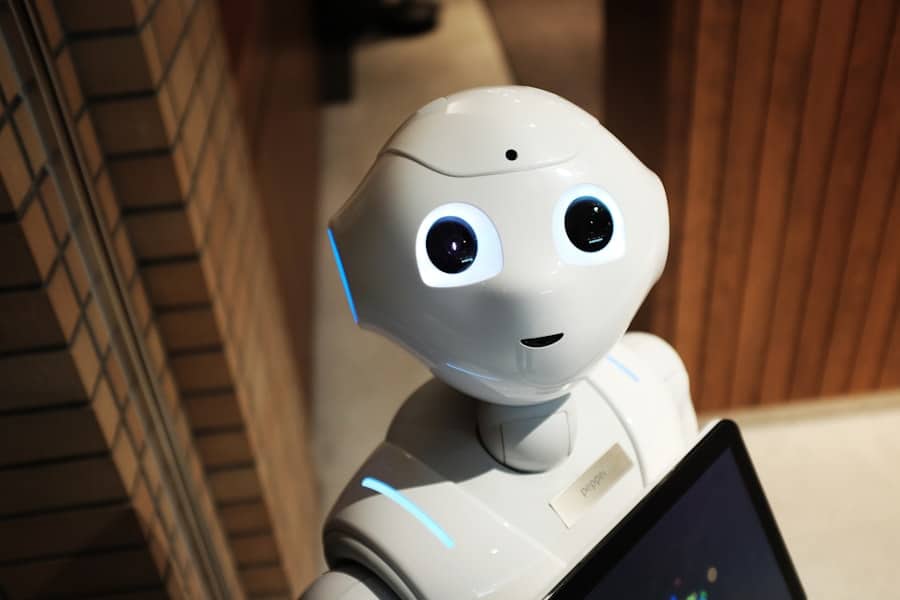As urbanization accelerates, cities around the globe are grappling with the mounting challenges of waste management. The sheer volume of waste generated in metropolitan areas necessitates innovative solutions to ensure sustainability and efficiency. Waste sorting systems have emerged as a critical component of modern waste management strategies, particularly in smart cities that leverage technology to enhance urban living.
These systems are designed to separate recyclable materials from general waste, thereby reducing landfill usage and promoting recycling efforts. In smart cities, the integration of advanced technologies into waste sorting processes is not merely an enhancement; it is a fundamental shift towards a more sustainable urban ecosystem. The concept of smart cities encompasses a wide array of technologies aimed at improving the quality of life for residents while minimizing environmental impact.
Waste sorting systems within these cities are increasingly becoming automated and data-driven, utilizing sensors, robotics, and artificial intelligence (AI) to optimize the sorting process. This technological evolution is crucial as it addresses the complexities of urban waste management, which includes diverse waste streams and varying recycling regulations. By implementing sophisticated waste sorting systems, smart cities can not only improve their recycling rates but also foster a culture of sustainability among their inhabitants.
Key Takeaways
- Waste sorting systems in smart cities are becoming increasingly important for efficient waste management and environmental sustainability.
- AI plays a crucial role in waste sorting by automating the process, improving accuracy, and reducing human error.
- The benefits of AI in waste sorting include increased efficiency, cost savings, and reduced environmental impact.
- However, challenges and limitations of AI in waste sorting include high initial investment, technical complexities, and potential job displacement.
- Case studies of AI-integrated waste sorting systems in smart cities demonstrate the potential for significant improvements in waste management and environmental outcomes.
The Role of AI in Waste Sorting
Artificial intelligence plays a transformative role in enhancing the efficiency and accuracy of waste sorting systems. Traditional waste sorting methods often rely on manual labor, which can be both time-consuming and prone to human error. In contrast, AI-driven systems utilize machine learning algorithms and computer vision technologies to identify and categorize different types of waste materials with remarkable precision.
For instance, AI can analyze images captured by cameras installed in waste processing facilities to distinguish between plastics, metals, paper, and organic materials. This capability significantly reduces contamination rates in recycling streams, ensuring that more materials are processed correctly. Moreover, AI systems can continuously learn and adapt to new types of waste as consumer habits evolve.
By analyzing vast datasets from various sources, these systems can improve their sorting accuracy over time. For example, if a new type of biodegradable plastic enters the market, an AI system can be trained to recognize it through image recognition techniques and adjust its sorting protocols accordingly. This adaptability is crucial in a world where product packaging and materials are constantly changing, allowing waste management systems to remain effective and relevant.
Benefits of AI in Improving Waste Sorting Systems
The integration of AI into waste sorting systems offers numerous benefits that extend beyond mere efficiency gains. One of the most significant advantages is the potential for increased recycling rates. By automating the sorting process and minimizing contamination, AI systems can ensure that a higher percentage of recyclable materials are successfully diverted from landfills.
This not only conserves natural resources but also reduces greenhouse gas emissions associated with waste decomposition in landfills. Additionally, AI-driven waste sorting systems can lead to cost savings for municipalities and waste management companies. By reducing the reliance on manual labor and increasing the speed of sorting operations, these systems can lower operational costs significantly.
For instance, a facility that employs AI technology may process twice as much waste in the same amount of time compared to traditional methods. This efficiency translates into lower disposal fees and reduced transportation costs, ultimately benefiting taxpayers and contributing to more sustainable city budgets.
Challenges and Limitations of AI in Waste Sorting
Despite the promising advantages of AI in waste sorting systems, several challenges and limitations must be addressed to fully realize its potential. One significant hurdle is the initial investment required for implementing AI technologies. The costs associated with purchasing advanced machinery, installing sensors, and developing software can be substantial, particularly for smaller municipalities with limited budgets.
This financial barrier may hinder widespread adoption, especially in regions where waste management infrastructure is already under strain. Another challenge lies in the complexity of waste streams themselves. While AI systems excel at recognizing common materials like plastics and metals, they may struggle with more complex or composite items that contain multiple materials.
For example, products like Tetra Paks or multi-layer packaging present difficulties for AI algorithms due to their mixed composition. Additionally, variations in local recycling regulations can complicate the development of standardized AI models that work effectively across different jurisdictions. Addressing these challenges requires ongoing research and collaboration between technology developers, waste management professionals, and policymakers.
Case Studies of AI-Integrated Waste Sorting Systems in Smart Cities
Several smart cities around the world have begun to implement AI-integrated waste sorting systems with promising results. In San Francisco, for instance, the city has adopted an AI-powered robotic sorting system at its recycling facility. This system utilizes advanced computer vision technology to identify and sort various materials at high speeds.
As a result, San Francisco has achieved one of the highest recycling rates in the United States, diverting over 80% of its waste from landfills. Another notable example is Seoul, South Korea, which has implemented an AI-based waste management system that includes smart bins equipped with sensors and cameras. These bins can automatically sort waste as it is deposited by residents, providing real-time data on waste composition and volume.
This information allows city officials to optimize collection routes and schedules based on actual usage patterns, leading to more efficient resource allocation.
Future Implications of AI in Waste Sorting
The future implications of AI in waste sorting systems are vast and multifaceted. As technology continues to advance, we can expect even greater levels of automation and efficiency in waste management processes. For instance, the development of more sophisticated machine learning algorithms could enable AI systems to predict waste generation patterns based on historical data and seasonal trends.
This predictive capability would allow municipalities to proactively adjust their waste collection strategies, ensuring that resources are allocated where they are needed most. Furthermore, the integration of AI with other smart city technologies could lead to innovative solutions for urban waste management challenges.
This data could be used to optimize collection routes dynamically, reducing fuel consumption and emissions associated with garbage trucks. As cities continue to embrace digital transformation, the potential for AI to revolutionize waste sorting and management will only grow.
Ethical Considerations in AI-Integrated Waste Sorting Systems
While the benefits of AI in waste sorting are clear, ethical considerations must also be taken into account as these technologies become more prevalent. One primary concern is data privacy; as smart bins and other IoT devices collect data on residents’ waste disposal habits, there is a risk that this information could be misused or lead to surveillance concerns. Ensuring that data collection practices are transparent and that residents’ privacy is protected will be essential for maintaining public trust in these systems.
While AI can enhance efficiency and reduce costs, it may also lead to job losses for workers involved in manual sorting processes. Policymakers must address these potential impacts by investing in retraining programs that equip displaced workers with new skills relevant to the evolving job market.
The Potential of AI in Transforming Waste Management in Smart Cities
The integration of artificial intelligence into waste sorting systems represents a significant advancement in urban waste management practices. By enhancing efficiency, increasing recycling rates, and reducing operational costs, AI has the potential to transform how cities handle their waste streams. However, realizing this potential requires addressing challenges related to investment costs, data privacy concerns, and workforce displacement.
As smart cities continue to evolve and embrace technological innovations, the role of AI in waste sorting will likely expand further. With ongoing research and collaboration among stakeholders, we can anticipate a future where intelligent waste management systems contribute not only to cleaner cities but also to a more sustainable planet overall. The journey towards smarter waste management is just beginning, but its implications for urban living are profound and far-reaching.
A related article to How AI Improves Waste Sorting Systems in Smart Cities can be found in The Next Web, which brings insights to the world of technology. This article may provide further information on the latest advancements in AI technology and how it is being utilized in various industries, including waste management. To read more about this topic, visit The Next Web article.
FAQs
What is AI?
AI, or artificial intelligence, refers to the simulation of human intelligence in machines that are programmed to think and act like humans. This includes tasks such as learning, problem-solving, and decision-making.
What are waste sorting systems in smart cities?
Waste sorting systems in smart cities are advanced technologies and processes used to efficiently sort and manage waste in urban areas. These systems often incorporate AI, robotics, and other technologies to improve waste management processes.
How does AI improve waste sorting systems in smart cities?
AI improves waste sorting systems in smart cities by enabling machines to recognize and sort different types of waste more accurately and efficiently than traditional methods. This can lead to increased recycling rates, reduced contamination, and overall improved waste management.
What are the benefits of using AI in waste sorting systems?
Some benefits of using AI in waste sorting systems include increased efficiency, reduced contamination of recyclables, lower labor costs, and improved environmental sustainability. AI can also help cities track and analyze waste data to make more informed decisions about waste management.
Are there any challenges or limitations to using AI in waste sorting systems?
Challenges and limitations to using AI in waste sorting systems may include high initial costs, the need for ongoing maintenance and updates, and potential job displacement for workers in the waste management industry. Additionally, AI systems may not be perfect and can still make errors in waste sorting.



